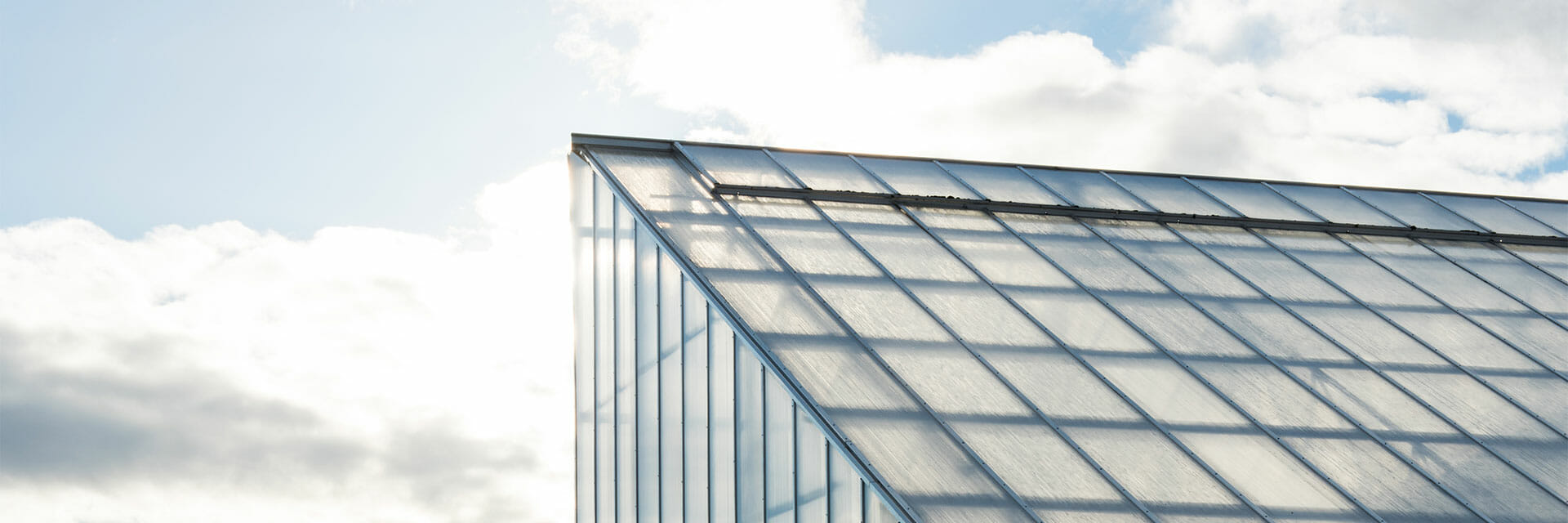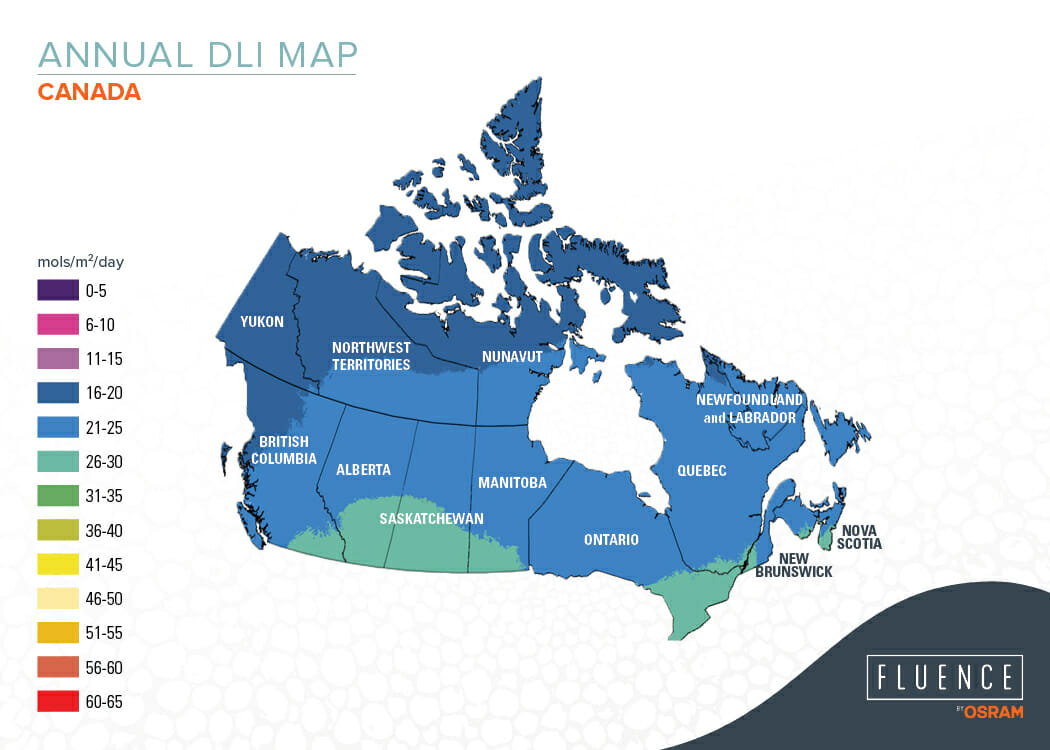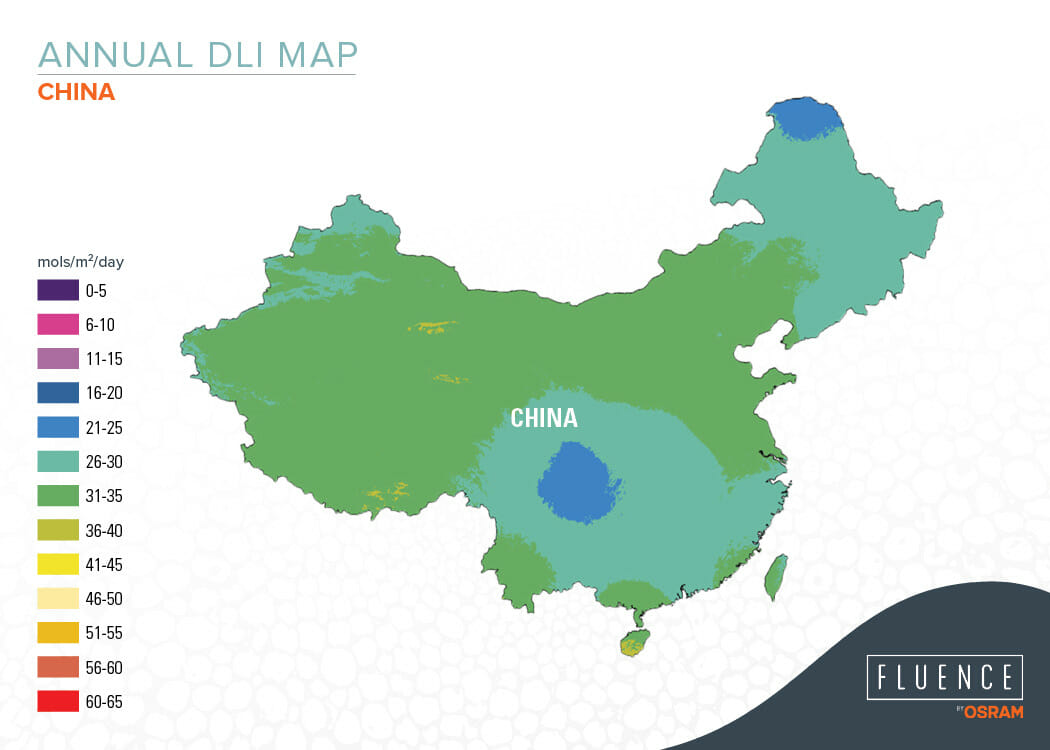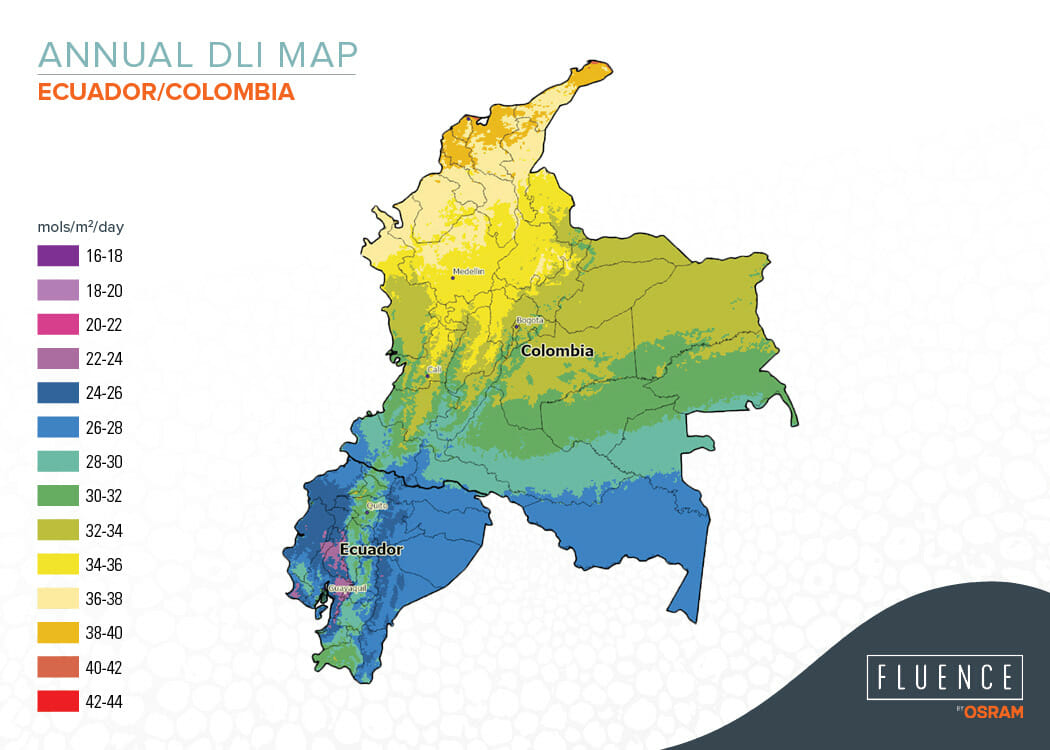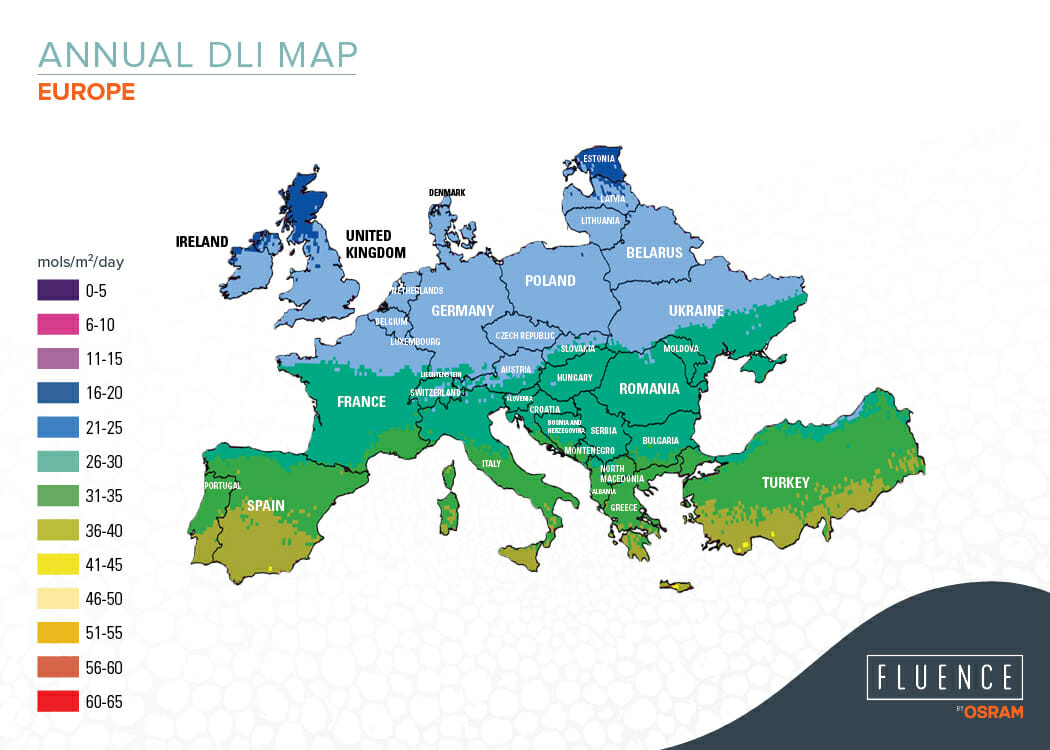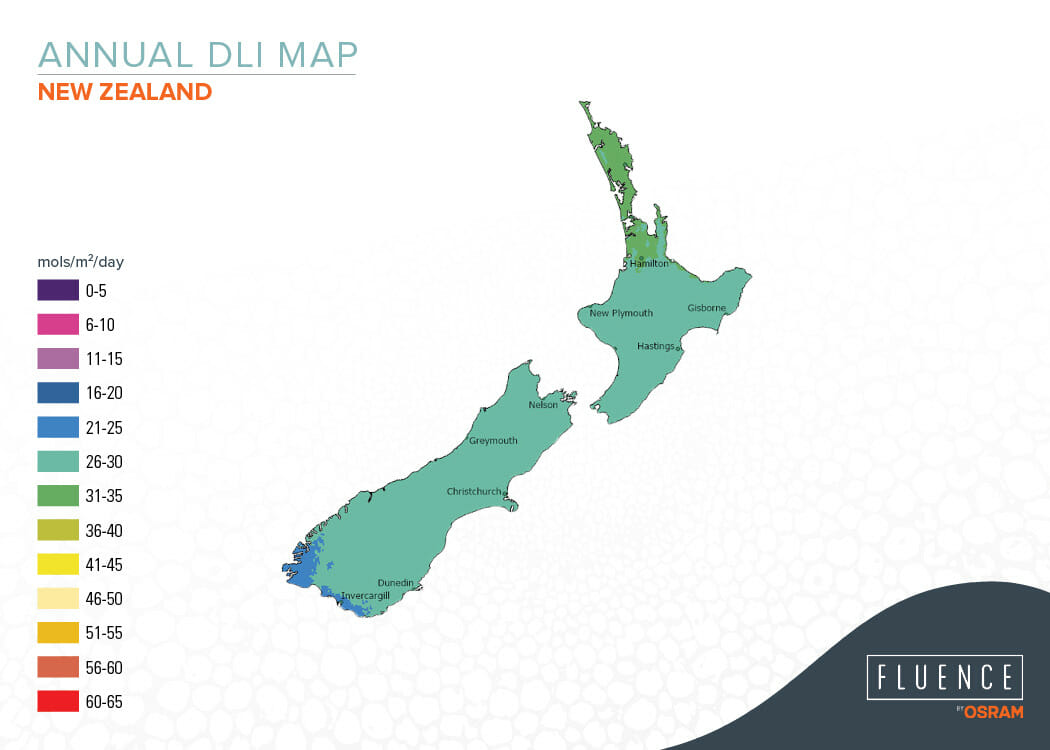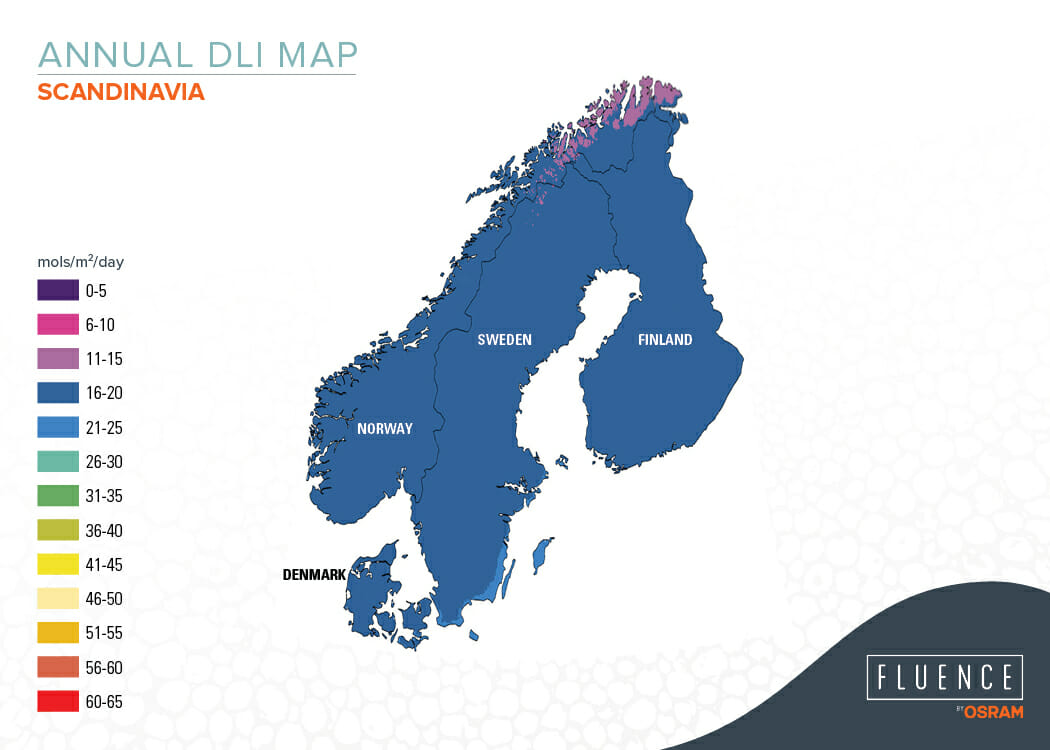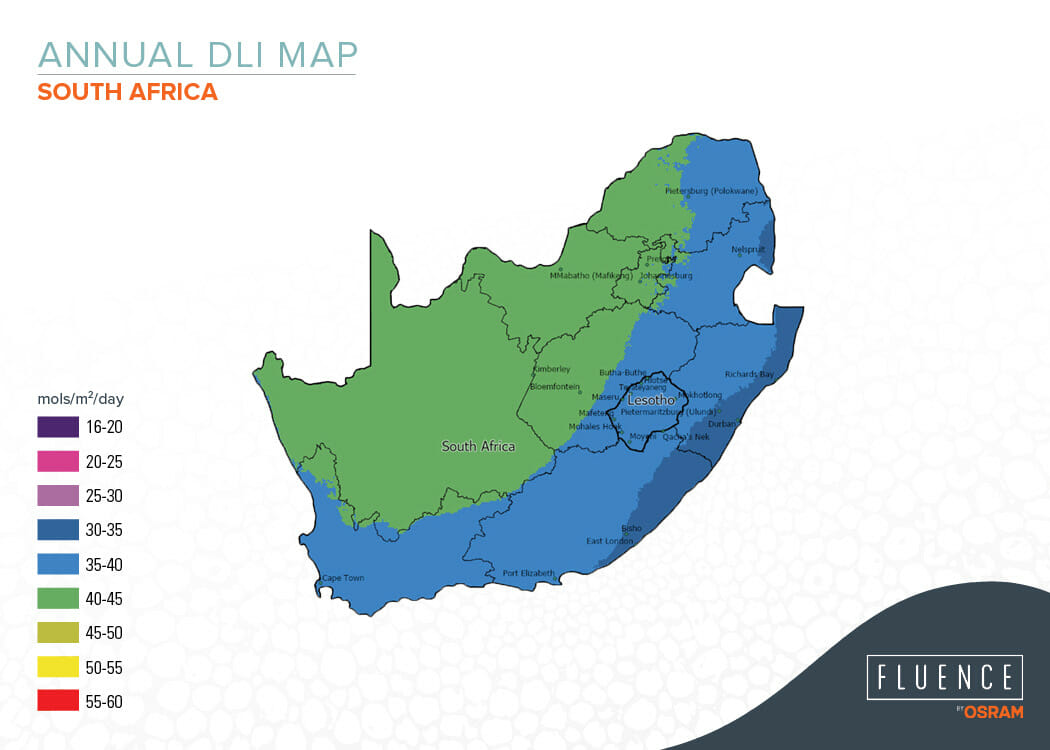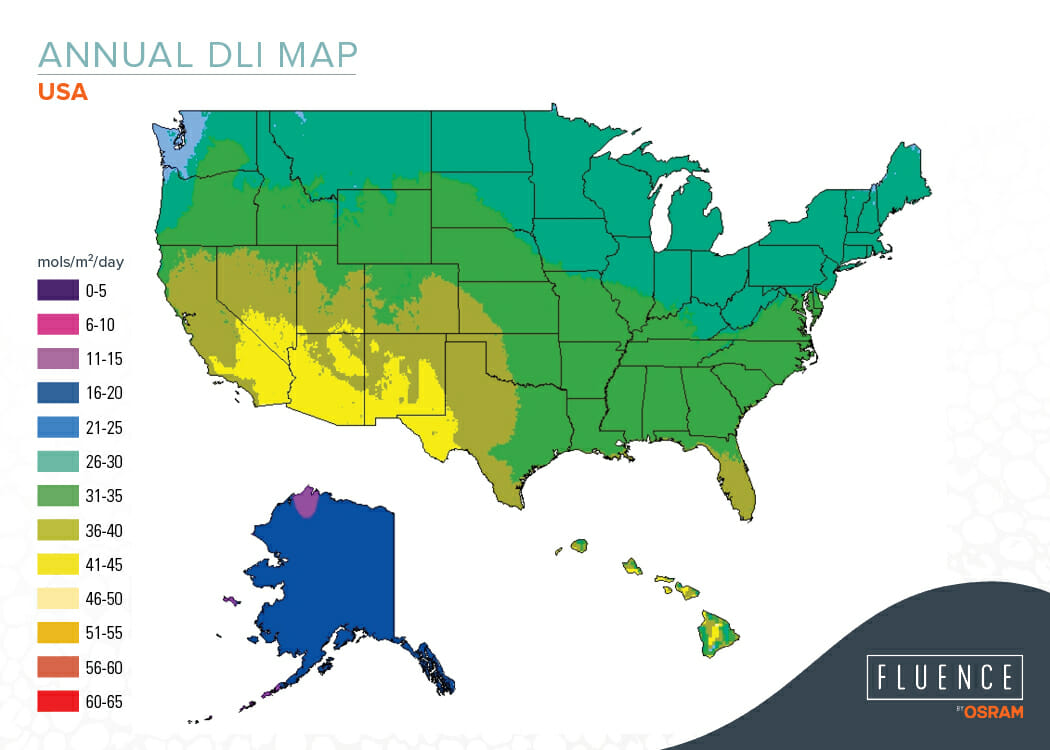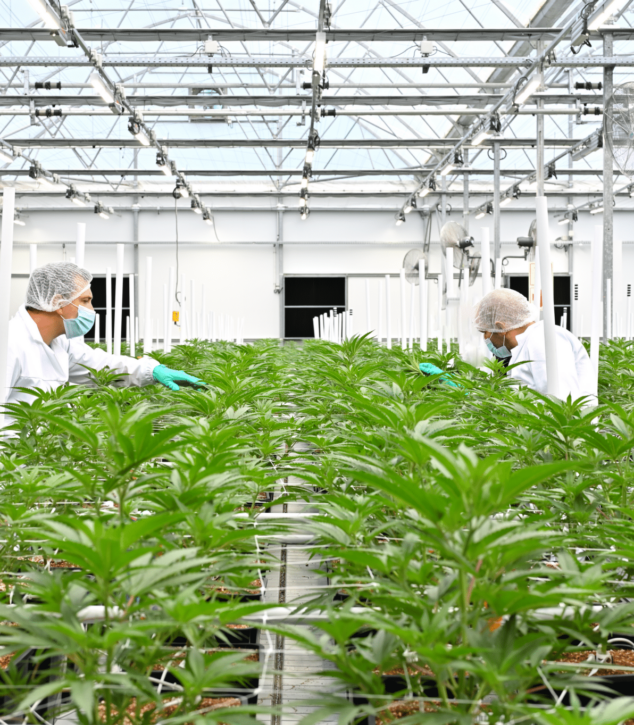Daily Light Integral (DLI) has been a widely used concept by ornamental greenhouse growers in the United States for the past few decades, but maps of DLI for other parts of the world had not been publicly available, until now.
To help greenhouses growers around the world better understand how to increase crop production, Fluence, in cooperation with Joanne Logan of the University of Tennessee have jointly released maps which portray annual DLI of outdoor sunlight in Australia, Canada, China, Columbia, Ecuador, Europe, Mexico, New Zealand, Russia, the Scandinavian peninsula, South Africa and the USA.*
These maps help to identify the need for supplemental lighting in more parts of the world, ensuring growers can identify what times of the year and regions around the world will most benefit from the use of supplemental lighting.
Understanding DLI
DLI is the total number of photons of PAR accumulated over one given area, over one 24-hour period. Since plants can be thought of as accumulators of solar radiation, DLI is a particularly useful metric to express a plant’s overall exposure of photosynthetic light on a daily basis. Commercial ornamental growers use DLI to analyze the cumulative number of photons in the PAR range a plant’s canopy absorbs over a 24-hour period, as moles of light (mol photons) per square meter (m−2) per day (d−1), or mol·m−2·d−1 (see sidebar figure 1).
DLI is a simple metric to calculate while cultivating indoors, since light intensity and photoperiod will stay constant in each stage of cultivation. However, DLI becomes trickier to calculate when cultivating outdoors or under a greenhouse, because of the atmospheric and seasonal changes which occur throughout any 24-hour period.

While PPFD from indoor lighting can stay constant, PPFD from natural sunlight will peak when the sun reaches its peak at midday and will change intermittently throughout the day due to environmental factors, such as weather, or contaminants in the sky, such as pollen or pollutants.
Because these environmental factors are dependent on the time of year, the time of day, and the length of time light is present, DLI is used to approximate the amount of natural sunlight that can potentially be absorbed by a plant. Further, DLI maps are useful to approximate how much supplemental light a plant requires and can even influence other considerations such as when shading needs to occur to shorten a plant’s photoperiod, to induce flowering for short day crops.
Conclusion
With the recent release of these DLI maps from around the world, growers have access to more accurate tools for growing plants year-round. Supplemental lighting enables year-round production and can increase the number of harvests a greenhouse produces. However, since lighting requirements are highly cultivar specific, it is important to research and understand the minimum requirements for the exact cultivars you intend to grow.
If you have any questions on supplemental lighting for greenhouses, be sure to reach out to the Fluence sales team to identify real-time gaps in lighting coverage and to ensure lighting is never a limiting factor to your grow.
*Maps of South America, the Middle East and Africa are coming soon.


